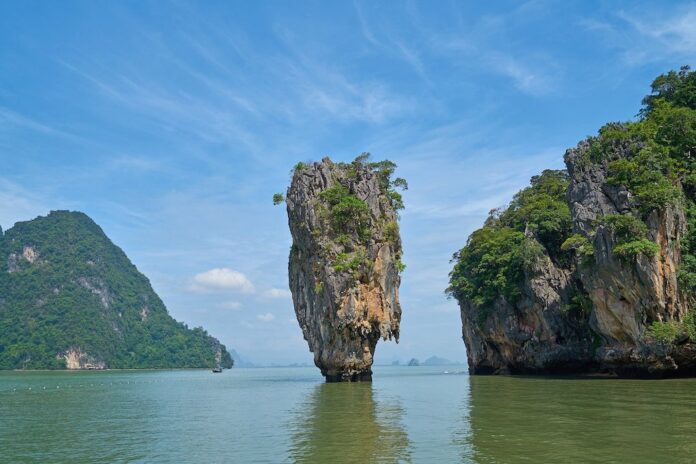Thailand is such a varied and vibrant country. It’s home to thousands of islands, one of the largest cities in southeast Asia, hundreds of thousands of ex-pats from all over the world, and a rainforest. Picking the best time to visit can be difficult, hopefully, we can help with that.
This in-depth article discloses all of the key information you need to make the best decision for yourself and your family. From weather to festivals, island information, favorite activities and much more. This is a definitive guide to the best time of year to visit Thailand.
Feel free to jump right to the section most important to you via the Table of Contents right below.
Be sure to also read – Best Luxury Hotels in Bangkok
When is the Best Time to Go For a Vacation in Thailand?
Tropical Thailand has some of the most beautiful weather year-round. It’s variety of climates can make it confusing as to when and where to visit. For example, in Thailand’s northwest, Chiang Mai and Chiang Rai are in the Thai rainforest. In the peak of the southern Isthmus, the latitude is nearly at the equator. This means that most try to visit outside of the rainy season between April and September each year.
While sunshine and warm weather are usually the norm during the year, there is a lot of rain during the winter months. Hurricane season starts in June and ends in November, but big storms aren’t always a regular occurrence in the islands. Winter is when surf swells tend to be the largest, particularly on the northern shores of the island.
In the winter, the temperatures range between 26°C (78°F) and 28°C (82°F), on average, while temps during the summer months range between 29°C (84°F) and 31°C (88°F). In essence, all year long is the best time of the year to visit Thailand.
THE WEATHER TENDS TO BE CONSISTENTLY GOOD IN OCTOBER AND MARCH, AS WELL AS NOVEMBER AND FEBRUARY. BUT EVEN DURING RAINY SEASON, THAILAND OFFERS HOT WEATHER AND PLENTY OF SUNLIGHT.
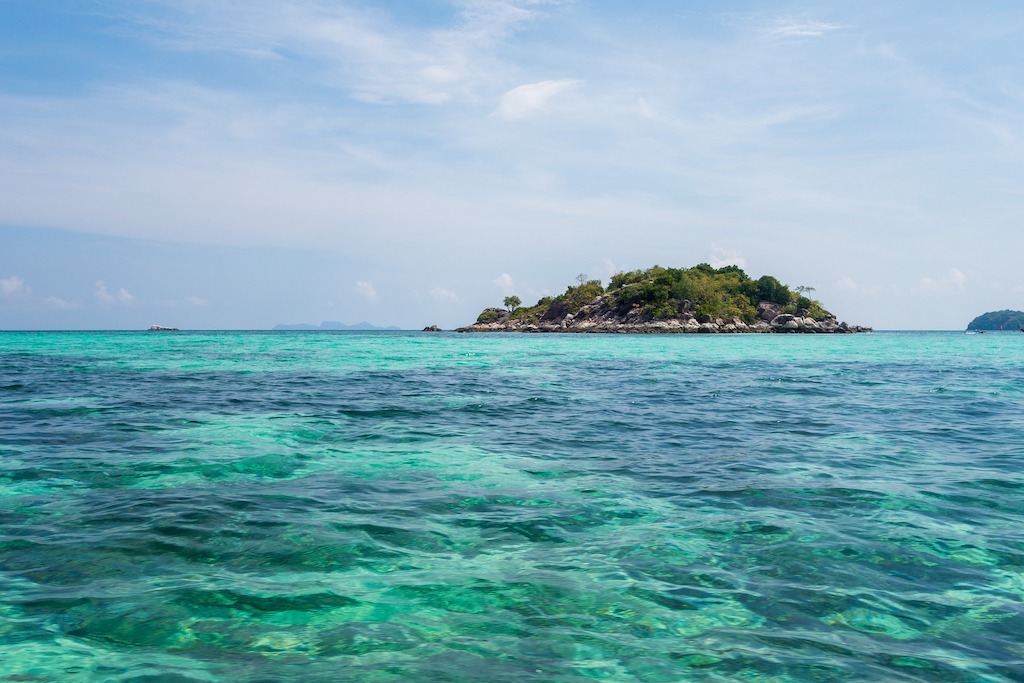
When to Purchase Airline Tickets
In most cases, booking four months ahead of your trip is the sweet spot. Booking closer in can raise costs as seats fill up. However, longer than four months (for example, a year in advance) still means higher prices because airlines know that you’re planning ahead and have budgeted money for the trip. This is also true of award seats, though planes should be empty when booking is first opened.
There are some exceptions, however. Nearly all of December is busy and expensive during Thailand’s dry season as well as the first few weeks of January. Travelling on Christmas Day will yield lower prices and greater availability even though Thailand is not itself a Christian nation. Visitors often observe these holidays and do not want to fly on them. Late January through February is one of the best times for which to buy tickets as business and leisure demand are both lower than other times of the year.
If you’re considering flying within Thailand or to nearby countries like Myanmar (Burma), Laos, Cambodia, Malaysia, or Vietnam you have a number of airline options serving distinctly different markets. Discount carriers Air Asia, Thai Smile, or VietJet are cheap and cheerful. National carriers like Thai Airways, Vietnam Airlines and Malaysia Airlines offer those with Star Alliance, SkyTeam, or oneworld connected itineraries an easy way to get to their destination.
PRO TIP: Consider Bangkok Airways for nearby flights from Bangkok’s boutique airline. Its prices are usually below the major international carriers but they include lounge access for all of their customers, meals at no charge, and it generally feels like first class on a regional airliner.
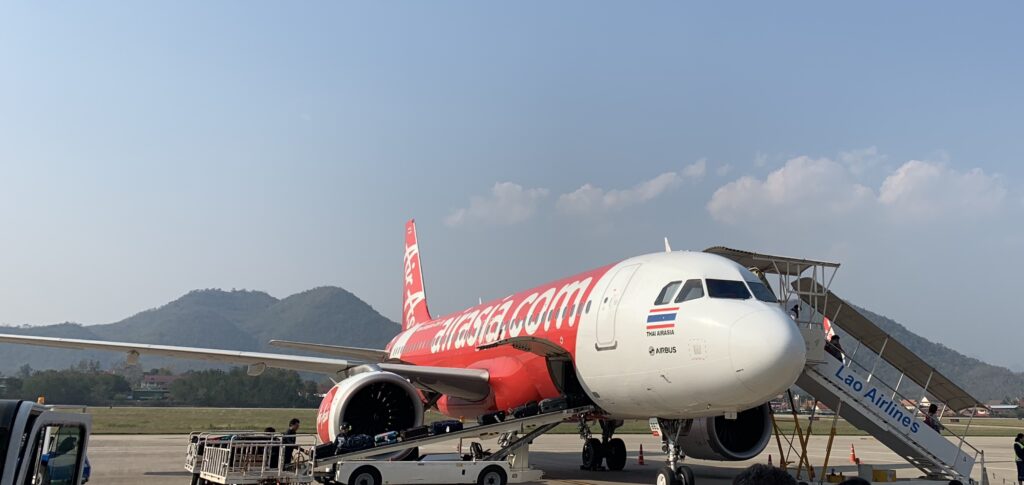
When to Make Hotel Reservations for Thailand
For peak season (December/January) booking in advance is best as hotels will fill up and desirable rooms and rates go quickly. However, for summer trips, especially in balmy June/July, three weeks prior to your trip should be sufficient. Almost any time in February is fine except for on and around Lunar New Year. Vacationing participants will holiday in Thailand during this period. Also beware of dates around the Songkran water festival which is usually three days in mid-April. Hotels will book up quickly around this period.
The Complete Guide To Hotel Check-In and Check Out
Bangkok, Phuket, and Koh Samui are very well represented for premium hotel brands. Bangkok in particular has some of the most high-end hotels for the cheapest prices anywhere in the world. The Park Hyatt or Waldorf-Astoria in New York often sell for more than $900/night, in Bangkok they can be obtained for $220-250. The same is true of St. Regis, Conrad, or JW Marriott.
The Best Beaches In Thailand
THE BEST BEACHES IN THAILAND COME DOWN TO A TRAVELER’S WILL TO REACH THEM.
Thailand is filled with coastline and islands. The islip shared in part with Malaysia offers beaches on both the Gulf of Thailand on the east and Andaman Sea on the west. Islands in Thailand are found in both waters.
Pattaya, south of Bangkok about 90 minutes, is not the best beach but Sai Kaew on a Naval Base to the east of the city is extremely private. Various islands are also accessible by ferry closer to town.
On Koh Phagnan and Koh Samui (backpacker and yuppie sister islands respectively), the journey by plane/train/bus to Surat Thani then the ferry out are substantial undertakings but lead to optimum privacy with excellent sandy beaches. Bangkok Airways flies to Koh Samui from Bangkok Suvarnabhumi directly.
A three-hour boat ride from Phuket to Koh Phi Phi provides a series of picturesque beaches and islands. Koh Phi Phi was unfortunately involved in a Tsunami in 2004 that devastated the island. It was the subject of the film, The Impossible. Gladly, the island has been rebuilt since. Area islands are home to a variety of film backdrops and exciting experiences including James Bond Island, Monkey Island (don’t feed the monkeys, seriously), and Maya Beach – the national park used to film the 2000 Leonardo DiCaprio movie, The Beach.
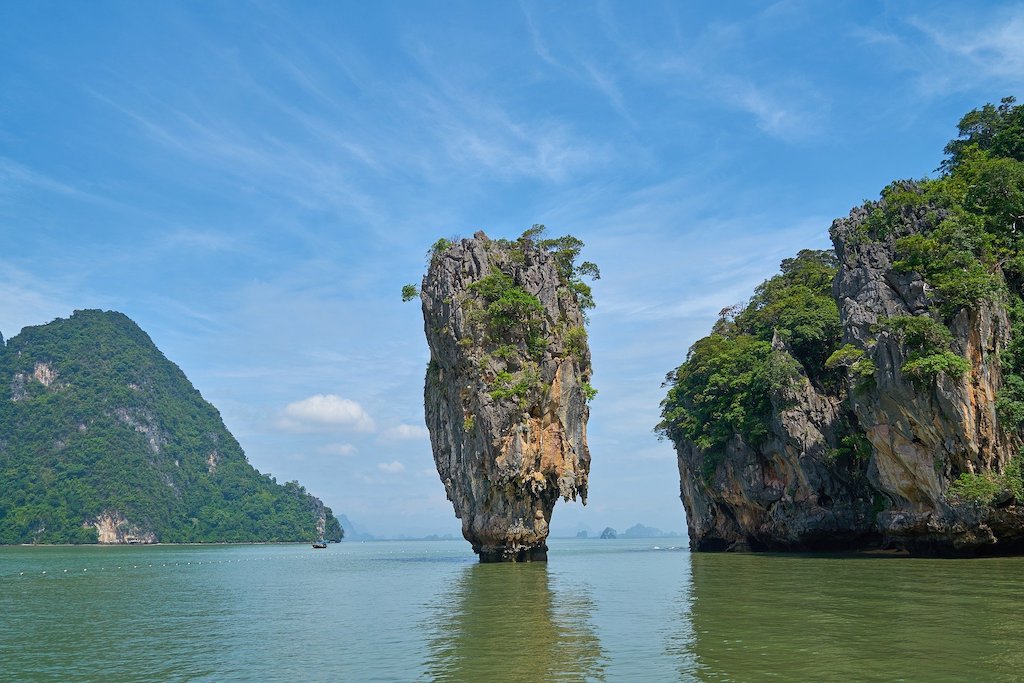
When to Visit Animal Sanctuaries
North of Bangkok, the wilds of Asia are on full display. Several elephant rescue facilities allow interaction with the animals including caretaking, washing, and feeding them. Avoid anything involving unnatural interactions with the animals as this usually indicates the animals have been abused or drugged. It’s dangerous for humans and abusive to animals.
There are places to visit tigers and sit next to them, a paw on your lap. You do not want to visit them, you really do not. Places where you mount and ride elephants around a track will showcase the massive mammals with scratch marks from abuse on the top of their heads, backsides and substantial marks from ankle chains.
However, a good elephant rescue like the Karen Hilltribe Elephant Sanctuary (west of Chiang Mai), will educate visitors and allow interaction with the animals while rehabilitating them for a return to the wild.

The best time of year is between October and April, though the edges of that range will ensure fewer people but warmer weather.
When to Visit the Rainforest
Thailand has almost everything: sandy beaches, beautiful islands, plains, big cities and rainforests. Easily accessed by frequent and convenient flights, buses and trains (flights are recommended due to time, comfort and relatively low cost – about $30-40 each way) the cities of Chiang Mai and Chiang Rai are the easiest access points.
Chiang Mai is on the edge of the rainforest in northern Thailand. Chiang Rai is a smaller city on the northern border (near the Mekong River) that splits between Myanmar and Laos.
While the rainforest is hot, humid and rainy year-round, the most enjoyable time of year is October to April with January and December the driest months of the cool season.

When to Swim and Snorkel in Thailand
It’s always a great time to swim and snorkel in Thailand. Its numerous beaches and islands provide some of the most beautiful sea life viewing in the world. Shoulder season is actually the best time to snorkel and swim in Thailand for a few reasons. Hot and rainy season begins in late April and ends in late September, but those months or near to those are the best for visiting Thai beaches and participating in water activities.
Crowds are low, temperatures are higher but still comfortable without excessive rain that can make snorkeling more difficult.
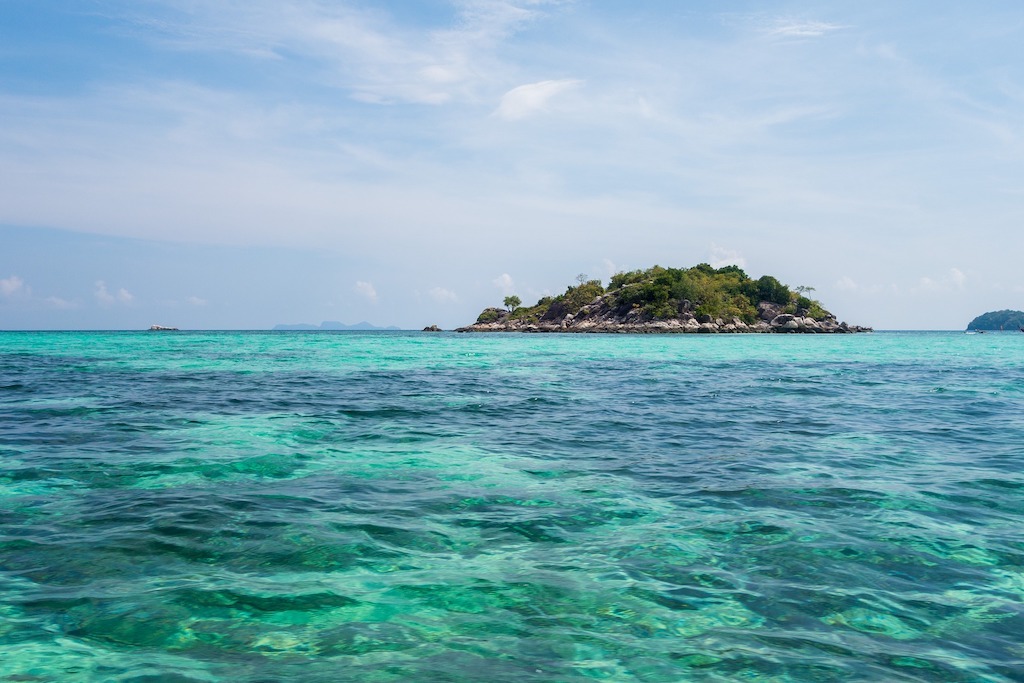
When to Go For a Family Vacation
Shoulder season may lead to the best value for money, but families prefer to travel to Thailand during the winter break periods in December and January. Children are out of school, parents often have extended breaks from work and expiring holiday time to use before the year calendar turns to a new year.
The months of December and January are also the driest months of the year and coolest which makes it easier for Thailand’s many outdoor activities with small children. Though these months are the coldest for Thailand, temperatures are still very, very warm (High: 89F/31C Low: 71F/21C) especially to visitors from colder climates like Russia, Europe and North America, all in the throes of icy winter at that time.
It will be more expensive and crowded than other times of the year, December and January are peak season for tourism, but still, certainly, a worthwhile time for families to visit with lots to do and an average of 1 day of rain between the two months combined.

Read More: The Top 5 Family-Friendly Hotels in Bangkok
When to Go on a Honeymoon in Thailand
Delaying your honeymoon from your wedding may be the best bet for those looking for an amazing experience in Thailand. The best weather is in December and January, but this is often the opposite of when couples in North America and Europe get married. For those that can delay, the dry season will offer nearly rainless days but full hotels especially during the Christmas and New Year’s holiday.
The best time to honeymoon in Thailand is in March when the temperatures are a bit hotter, and a little bit rainier, but most tourists have gone home and hotels are wide open and welcoming.
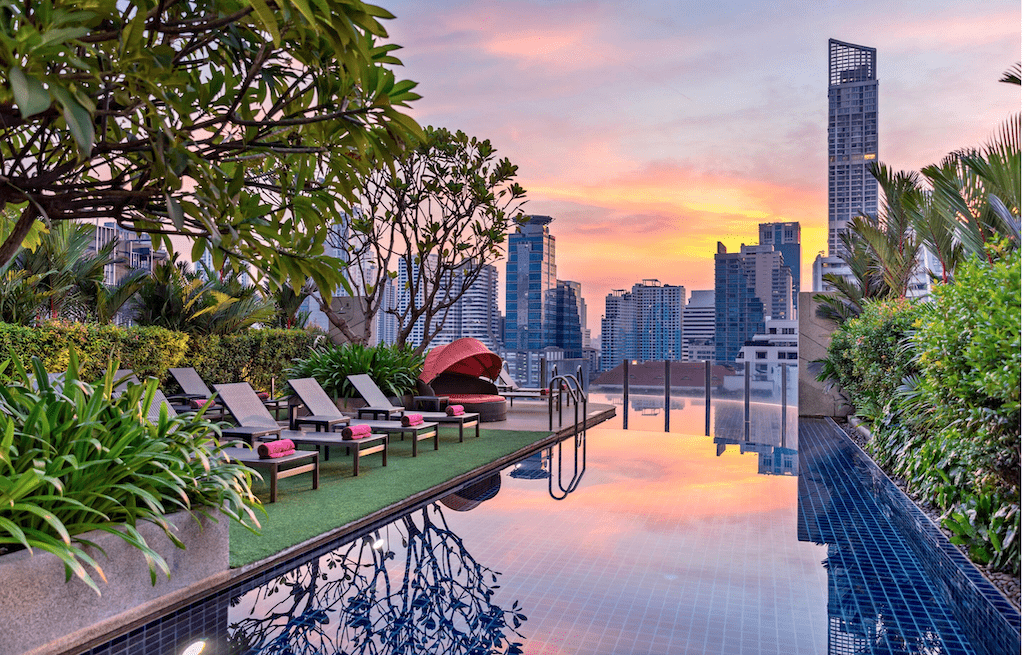
When to Go to Save Money
We have highlighted shoulder season as an ideal balance between favorable weather, costs and crowd sizes. However, the best time to go to save money is during rainy season. But before you dismiss it altogether, as someone who has lived in Thailand during rainy season (my wife did so twice), I can say wholeheartedly that this is one of the best times to visit and especially to save money.
During the wettest months of the year (June/July), visitors tend to stay away which brings down the cost of transportation, hotels and homestays, and increases availability at tourist destinations. Most days in the rainy season are only rainy for about 20-30 minutes at or around 4pm. This isn’t a perfect rule, sometimes it will rain longer and sometimes it won’t rain at all – but for most days we could set our clocks by that 4 pm rainfall.
It takes a little while for streets to dry up again following the rain, but generally speaking it was dry most nights by 6-7 pm. Still, the marker of “rainy season” keeps most tourists elsewhere during these months and lowers costs for just about everything, including restaurant meals.
PRO TIP: There’s one additional low season for the major cities in Thailand (Bangkok, Pattaya, Chiang Mai, Phuket) where visitors will see lower airfare and hotel prices. This is during the last two weeks of January and the weeks preceding Valentine’s day. The low in traffic is due to limited business travel historically during this period.
Read More: The Top 5 Budget Hotels in Bangkok

When to Go Diving in Thailand
It’s always a good time to go diving in Thailand but there are truly two separate seasons and approaches. The calmer waters of the Andaman Sea in the winter months of October to April are the best for seeing really exotic sealife.
Whale sharks, massive manta rays, and two-meter jelly fish are visible especially near the islands around Koh Phi Phi and off the coast of Phuket and Krabi.
However, the Gulf of Thailand is better for diving March to September. While less exotic sea life is visible, conditions are generally calmer and crowds smaller in Koh Phagnan and Koh Samui.
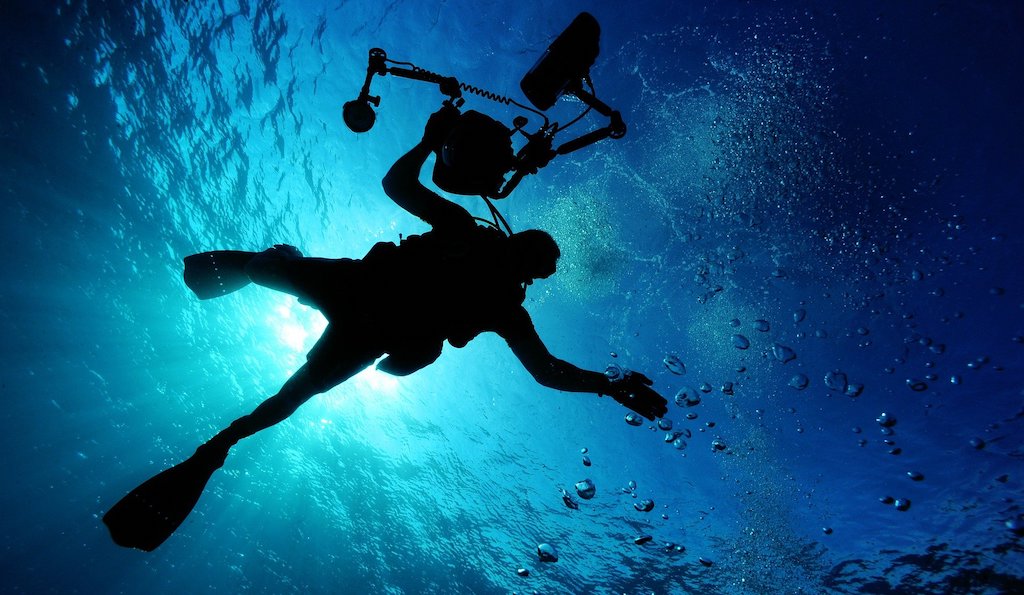
When To Go When It’s Not Busy
The country of Thailand is virtually desolate in June and July each year. Seasonally visitors to Thailand (snow birds) leave colder climates for warm Thai beaches from October to March/April each year. Tourists visit the country during the holiday months (and the driest) in December and January. Business and tourism both experience annual lows in late January to late February before Lunar New Year, then again remain low until the week preceding Songkran in mid-April.
To avoid crowds, visitors may want to consider these times of year as ideal but also consider the shoulder periods of March-April and September-October.
For me personally, as a former seasonal resident of Thailand and an annual visitor (sometimes several times per year) the best time to visit Thailand is in March.
When to Go For Songkran
Thailand uses a different calendar to most of the world. Instead of the Gregorian calendar most countries, especially in the west, use that begins counting at the birth of Christ, the Buddhist calendar is 543 years ahead. In 2021, Thailand will cross into 2574 on April 13th, Thai New Year.
The celebration of Thai New Year is called “Songkran” and it is the most amazing and unique New Year celebrations anywhere in the world. To wash away the sins and bad luck of the last year and start the year fresh, the tradition has been to put a natural, organic white powder on someone’s face and then pour a bucket of water over their head.
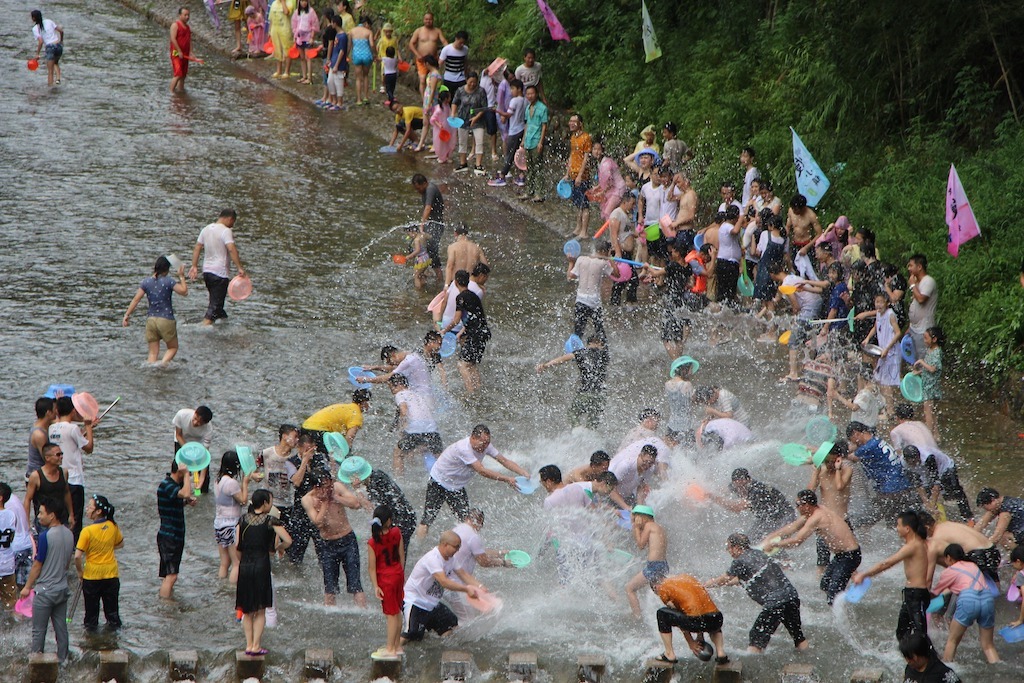
In most places, this is done with love by local Thai people and is a wonderful celebration just as the hot season is beginning to start. However, beware of some major roads that have been closed for this purpose and the massive water guns that have replaced small buckets of water – you may be in for a shock.
While Thailand moved the effective date of the New Year to January 1st in 1888, Songkran is celebrated by the Thai people as a traditional holiday that is still recognized as a working holiday (and the days that surround it.)
When Is The Best Time to Go to Thailand for Weddings
Weddings are often held in December and January for its relatively cooler temperatures (just a few degrees from summer) and dry conditions. This can be convenient for traveling families and friends who may be able to take advantage of Christmas and New Year breaks from school and work. Weddings are special so knowing the best time to visit Thailand will be very important.
However, due to the high tourism season falling during the same period, wedding planners may want to consider November and February when crowds are smaller, hotels and airlines have more availability, and costs are lower.

When to Go For Nightlife
If Thailand, and in specific Bangkok, is known for taking something to the extreme – it would be its nightlife scene. I will break this section into three parts: shopping, dining, partying. Each will play an important part in deciding the best time of year to visit Thailand.
Shopping
Night markets are one of the best cultural experiences in Thailand. Night markets are set up just about everywhere in and around a Thai city usually from about 5 pm until about midnight. Everything from shoulder massages to mango sticky rice to knock off DVDs are of offer. Night markets are a wonderful way to connect with local Thai culture. Go every night.
Dining
Some of the best restaurants in the world are in Bangkok. In fact, before closing recently, the second-best restaurant in the world (Gaggan) and best restaurant in Asia is in Bangkok. In fact, the first Michelin-starred shop house (a more formalized street vendor barely) is in Bangkok. Bangkok Restaurant week has traditionally been held in August or September.
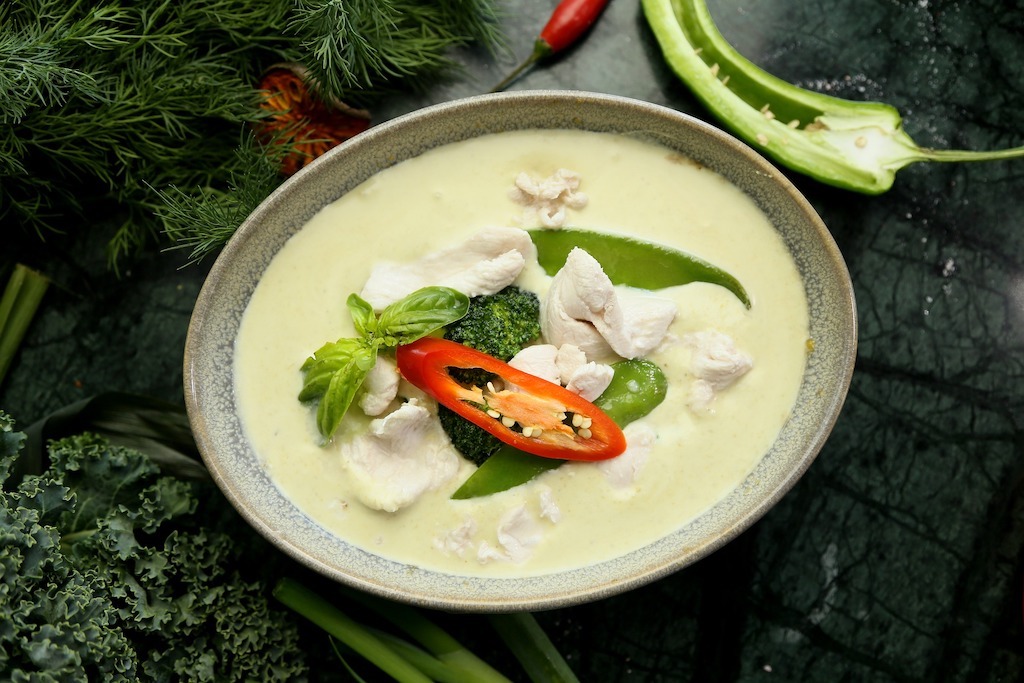
Partying
Made famous by many movies, television shows, books and traveler’s tales, Bangkok lives up to its party reputation. Specific party zones around town (Nana, Cowboy, and Patpong) are centered around night markets that then expanded. They can be districts for revelry and while the Thai government has tried to take a firmer stance on the areas in favor of Thailand’s conservative culture, they have allowed them to continue.
When is the Best Time to Visit Each City/Island?
When You Should Visit Bangkok
For dry weather and sunny skies, the best time to visit Bangkok is in December and January. However, many have this in mind as well, which leads to excessive crowding, busy streets and full hotels and airlines.
Assuming the time of you visit Bangkok is totally open and not dependent on school or work breaks (convenient over the holidays in December and January) we recommend shoulder seasons like October and March where rainfall is minimal, the temperature is relatively similar but travelers usually are not as prevalent.
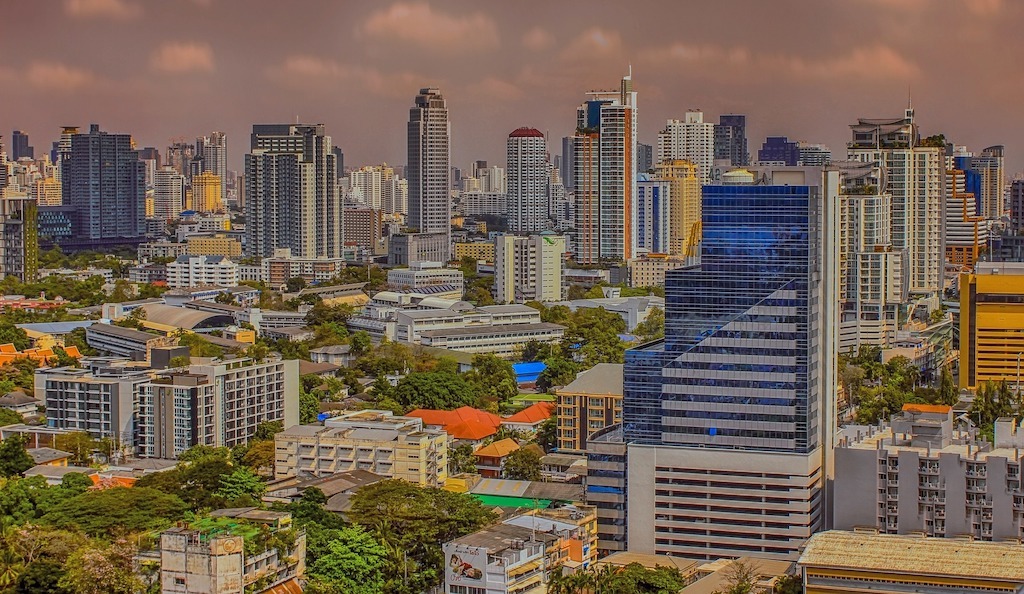
Read More: The Top 5 Unique Business Hotels in Bangkok
The Best Time to Vacation in Chiang Mai
Chiang Mai is a northern city in Thailand that has established itself as an expatriate and remote work hub. It is surrounded by the Thai rainforest near the Mekong river which is a split border between Laos and Myanmar. Due to weather it is best to visit Chiang Mai in December due to lower rainfall, however, October is best for festivals that are truly once in a lifetime and it might be worthwhile to brave the wettest conditions of the year.
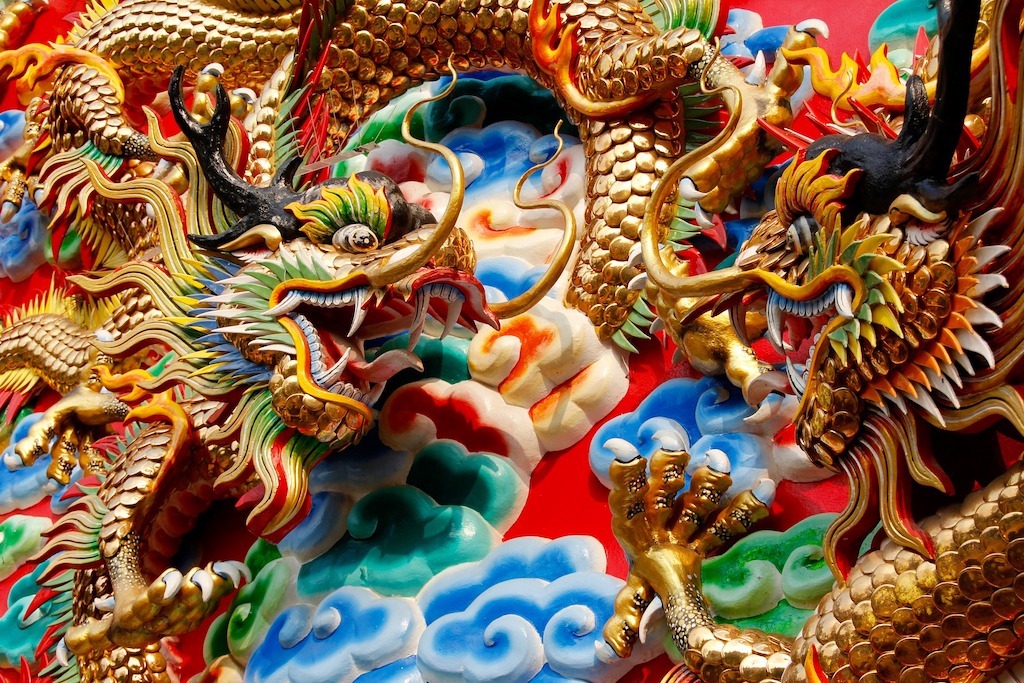
DUE TO WEATHER IT IS BEST TO VISIT CHIANG MAI IN DECEMBER DUE TO LOWER RAINFALL, HOWEVER, OCTOBER IS BEST FOR FESTIVALS THAT ARE TRULY ONCE IN A LIFETIME AND IT MIGHT BE WORTHWHILE TO BRAVE THE WETTEST CONDITIONS OF THE YEAR.
The Best Time to Vacation in Phuket
As with the rest of the year, Phuket is optimally visited in December and January when the weather remains hot but dry with a combined one day of rain annually during the 62-day period. As with other areas of Thailand, shoulder seasons are advisable.
It’s worth noting that Phuket offers a comparable experience to the Caribbean with comparable prices while the rest of Thailand is much higher quality for much lower prices, including in Bangkok. However, visitors would find amazing beaches and a very unique collection of islands if they venture from Phuket to the islands around Koh Phi Phi, approximately 3-4 hours by ferry from the mainland.
Crowds drop considerably following Songkran in mid-April as do hotel rates and flight prices. They resume higher price points in late November.
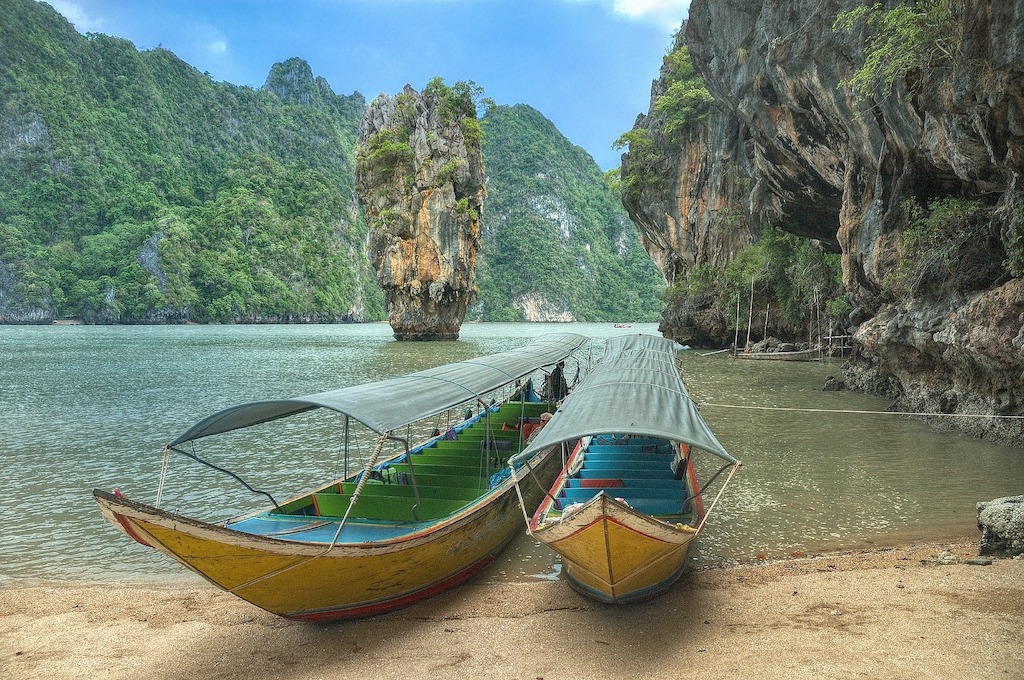
The Best Time to Vacation on Koh Samui
Situated in the Gulf of Thailand, Koh Samui is perhaps one of the most luxurious places in the country. Phuket may be more widely known by Americans, but Europeans are more likely to visit Koh Samui and they have by far more luxurious hotel brands, amenities and home stays.
Koh Samui is part of an island pair with Koh Phangan (Koh means island.) There are two ways to reach Koh Samui and just one to reach Koh Phangan. A ferry runs daily (sometimes several times daily) from Surat Thani to Koh Samui then on to Koh Phangan, the tag passage from Samui to Phangan is the only way to reach the island. Koh Samui also has direct flights from Bangkok’s Suvarnabhumi International Airport on Bangkok Airways, a boutique airline.
The Gulf of Thailand is different than the Andaman Sea on Thailand’s west coast. Protected from the more extreme weather to the west, Samui benefits from calmer water throughout the year on the Gulf.
The best time of the year to visit Koh Samui are during the dry months of December and January. For those looking to save a little bit of money on luxury accommodations, they should consider trips during adjacent months such as late November or early February.
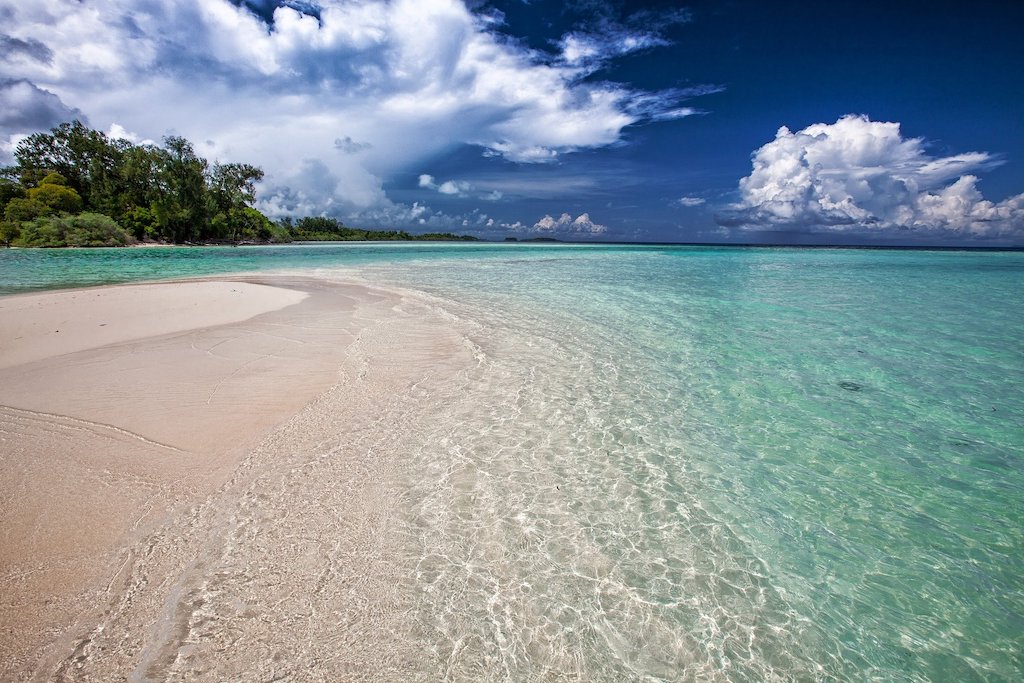
Travel Seasons In Thailand
High season (November to January)
Thailand starts its high season in mid to late November and it extends through the first few weeks of January. This is the driest season and the coolest though it’s still incredibly hot during the day (Highs: 89-90°F/32°C, Lows: 71-75°F/22-24°C) and temperate in the evenings.
Due to holiday breaks from work and school Thailand is busier than usual during the last two weeks of December and first week of January. In recent years Bangkok has amplified its embrace of Christmas around the city and in the night markets though few in the country celebrate the holiday as a religious experience. During New Years, celebrations are held all over the city including the world’s highest ball drop at State Tower near the Chao Phraya river.
Low season (May to September)
Following Songkran in mid-April, tourism quiets down for the year. These months are the hottest of the year (Highs: 94-96°F/33-35°C, Lows: 77-79°F/25-26°C) and the wettest. Rainfall occurs 14-18 monthly during this period, though some rainy days only constitute a slight afternoon shower and mostly clear skies.
Those in the southern hemisphere that frequent Thailand, specifically those from Australia and New Zealand tend to forgo trips during the rainy season and instead opt for Bali. Business trips remain busy throughout this season though many Europeans take the month of August off even further reducing Thailand traffic during the month.
The Weather in Thailand Categorized by Month
Every month of the year, Thailand is hot by most standards. Average monthly temperatures vary only slightly from the hottest month in the summer to coldest month in the winter. However, dry and wet seasons offer completely different experiences. Some months have virtually no rainy days while other seasons feature rain in the forecast every other day or more. Knowing the weather is critical in deciding the best time of year to visit Thailand.
January weather
January falls in Thailand’s dry season with some of the more temperate weather. Average rainfall occurs just one day during the first month of the year. During January, average high temperatures are 89°F (32°C) with nightly lows of 71°F (22°C). Rainfall is just 0.2” (28.3mm) during the month. Visitors during the month of January may want to bring a light jacket or shawl for evenings out and long pants, as well as closed-toe shoes. The water is generally calmer as is the weather during this month.
February weather
February remains in Thailand’s dry season with relatively temperate weather. Average rainfall occurs just one day during the first month of the year as it does in January. During February, average high temperatures are slightly warmer than in January at 92°F (34°C) with nightly lows of 76°F (24°C). Rainfall is just 0.15” (22mm) during the month. Unlike January and December, February is warm and dry enough that visitors need not bring jackets or shawls though long pants and closed-toe shoes are still required at many finer dining venues. As throughout the dry season, water is generally calmer as is the weather during this month.
March weather
March remains in Thailand’s dry season though the weather begins to show signs of changing for the season. The month averages two days of rainfall. During March, average high temperatures increase during the day to 94°F (35°C) with nightly lows of 78°F (25°C). Rainfall is just 0.3” (40mm) during the month. March is hot during the day and warm throughout the night. Transitioning to the wet season, weather changes may include more turbulent waters and altered winds.
April weather
Shockingly, April is the hottest month on average in Thailand. Though April is technically spring and in between the dry and rainy seasons, there isn’t yet enough cloud cover to keep the days cooled down as the coming months will. The month averages six days of rainfall (20% of the month.) April average high temperatures are the hottest of the year reaching highs of 96°F (35°C) with nightly lows of 80°F (25°C). Rainfall increases twelve-fold to 3.6” (91mm) during the month. April is hot without abatement. Seasons are in the process of changing from dry to wet, as such more extreme weather instances are likely.
May weather
Though May is fully in the wet season and Thailand’s summer, it cools off slightly from April with cloudier skies and rain that cools things down ever-so-slightly. The month averages nearly half rainy at 14 days of rainfall. May average high temperatures remain hot though cool two degrees to 94°F (34°C) with nightly lows of 79°F (25°C). Rainfall doubles from April to 7.2” (183mm) during the month. Fully in the wet season, visitors can expect afternoon rain showers that often last just 20-30 minutes each day at 4 pm and intermittent thunderstorms in the night as cooler temperatures meet the day’s warm air.
June weather
June is in the wet season and Thailand’s summer, mostly maintaining the status quo from May. The month averages nearly half rainy at 14 days of rainfall. June average high temperatures remain hot though cool one degree to 93°F (32°C) with nightly lows of 79°F (25°C). Rainfall remains flat against May at 7.1” (180mm) during the month. Visitors should expect afternoon rain showers that often last just 20-30 minutes each day at 4 pm and intermittent thunderstorms in the night as cooler temperatures meet the day’s warm air.
July weather
July is the middle of summer and the rainy season. The month averages nearly half rainy at 14 days of rainfall. July average high temperatures remain hot though cool one more degree to 92°F (32°C) with nightly lows of 78°F (25°C). Rainfall is down slightly in July to 6.9” (175mm) during the month. Visitors should expect afternoon rain showers that often last just 20-30 minutes each day at 4 pm and intermittent thunderstorms in the night as cooler temperatures meet the day’s warm air.
August weather
Summer and the rainy season are beginning to wind down in August, though in Thailand that means relatively the same temperature but declining rainfall amount spread out over more days. The month averages more than half rainy at 16 days of rainfall. August average high temperatures remain hot though cool one more degree to 91°F (32°C) with nightly lows of 78°F (25°C). Rainfall is down slightly in August to 6.7” (170mm) during the month. Visitors should expect afternoon rain showers that often last just 20-30 minutes each day at 4 pm and intermittent thunderstorms in the night as cooler temperatures meet the day’s warm air.
September weather
Summer is transitioning to fall but the rainy season remains active. But moving into falls in Thailand still hot days and warm nights but rainfall becomes less substantial but more frequent. On average, two-thirds of the month experience rainfall. September temperatures remain nearly static against the prior month at 91°F (32°C) with nightly lows of 77°F (24°C). Rainfall is down slightly in September to 5.1” (170mm) during the month. Visitors should expect rainfall daily for a brief period with calmer weather.
October weather
The final throes of the rainy season come to a hefty end halfway through the month of October. Bring a raincoat and wear it. While only half of the month sees rainy days on average, rainfall amounts are the highest of the year. October highs are the same as the prior month, 91°F (32°C) with nightly lows dropping one degree to 76°F (24°C). Rainfall is the heaviest of the year in October at 8.7” (290mm) during the month. Interestingly, the sea temperature is warmer than the nightly lows at 29°C in the water.
November weather
Moving into the dry season and winter, November brings some abrupt changes. Rainy days drop to just five during the month. November high temperatures drop a degree during the day and night each vs the prior month, 90°F (31°C) with nightly lows dropping one degree to 75°F (23°C). Rainfall occurs mostly in the first half of the month, receiving just 3.7” (130mm) during the month.
December weather
December falls in the early portion of Thailand’s dry season with some of the most temperate weather Thailand receives. December is so dry, in fact, that it averages zero days of rainfall (though actual precipitation does occur in small doses. In December, average high temperatures are 89°F (32°C) with nightly lows of 71°F (22°C). Rainfall is just 0.05” (6mm) during the month. Like January, visitors during the month of JanecemberDuary may want to bring a light jacket or shawl for evenings out and long pants, as well as closed-toe shoes. The water is generally calmer as is the weather during this month.
Thailand Festivals And Events
When deciding on the best time of year to visit Thailand you should always consider the festivals and events going on throughout the year.
January
New Years celebrations begin on the first as they do around the world. Unique to other countries in the world, Wan Dek (Children’s Day) is celebrated on January 9th. Expect larger crowds at public places with families bringing their children out for a day of fun and lavishing gifts upon them.
In the northern city of Chiang Mai, the Bo Sang Umbrella and Sankhampaeng Handicrafts festival typically occurs on the third weekend in January. This year, if it remains on schedule, would take place the 15-17th.
February
Chiang Mai Flower Festival
(first full weekend in February) Flower-themed floats, parades, marching bands fill a weekend in the northern Thai city.
Chinese Lunar New Year
Visitors from across Asia will descend on the city to celebrate the Lunar (Chinese) New Year but especially Chinese visitors on a long holiday weekend. Activities in Bangkok’s Chinatown take place over the days surrounding the holiday. Phuket and Chiang Mai have similar celebrations on a smaller scale.
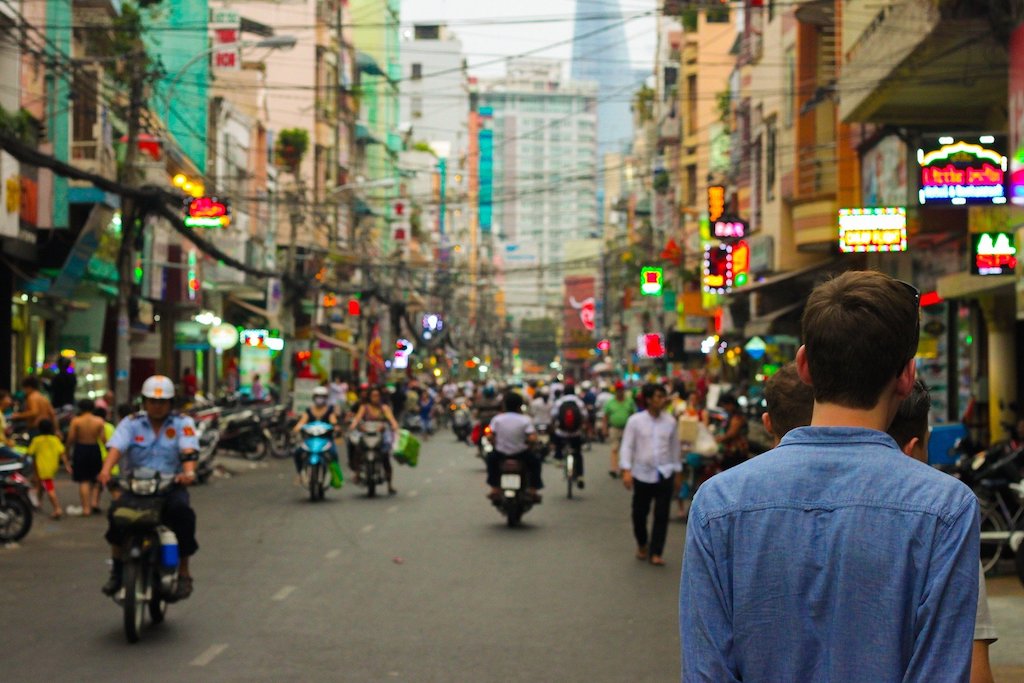
Trang Underwater Wedding
On the days surrounding Valentine’s Day (13th-15th) in Trang and Ko Kradan, couples are invited to exchange vows under the water.
Makha Bucha Day
Public holiday celebrating a day when disciples of the Buddha randomly appeared to hear the Buddha speak. No alcohol sales, public buildings will be closed.
Burapa Bike Week
Pattaya (southern coastal city) hosts what is said to be the largest motorbike week in Southeast Asia.
March
National Elephant Day
Observed on the 13th, this public holiday celebrates Thai elephants and their contribution to Thai society.

National Muy Thai Day
Taking place on the 17th, a national Thai martial arts celebration begins in Ayutthaya with tournaments and other cities echo similar events around the country.
April
Poy Sang Long
Rite of passage for monastic boys usually takes place around the first few days of April but the date moves annually with the lunar holiday.
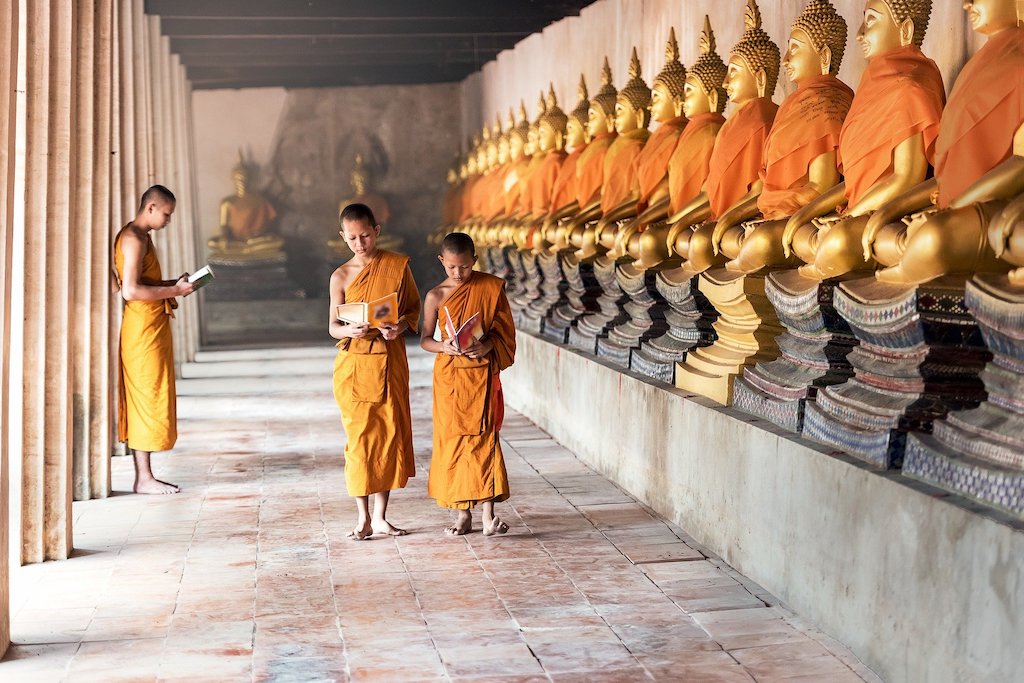
Chakri Day
April 6th annually, Chakri day celebrates the monarchies that have ruled Thailand. Monarchies are protected in Thailand and free speech in Thailand does not apply when speaking of them under lese majeste law, foreigners should be aware.
Songkran
Buddhist New Year celebrated on April 13th (and the days surrounding) in which white paste is put on a stranger’s face (lovingly) and buckets of water spilled over the elderly to wash away bad luck and sins from the previous year. It has evolved into an all-out water fight in special areas of the major cities, closed off to the public during this joyous celebration.

Wan Lai Sand and Sea Sculptures
In Chon Buri province (including Pattaya) large and elaborate sand sculptures are made on the beach and competitions for best design and execution are waged.
Phuket Bike Week
Motorbike festival in the southwest city of Phuket usually held in mid-April.
May
Labour Day/Coronation Day (public holidays)
Held on May 1st/4th respectively, public buildings will be closed.
Visakha Bucha Day
The day marks the full moon on the six lunar month which was also the same day the Buddha was born, reached enlightenment at age 35, and died at age 45. This is a public holiday meaning there is no alcohol sales and many bars and clubs as well as all public buildings will be closed. In 2021, the date will be May 26th.
Isan Rocket Festivals
To celebrate the beginning of rice planting season, phallic-shaped bamboo shoots are filled with gunpowder and shot into the sky to “inspire” the Buddhist Gods to make it a plentiful year. For those working in the rice fields, this is the last party for awhile before months of toiling in the sun. Dates vary by year.
Royal Ploughing Ceremony Bangkok
Giving thanks and paying homage to the agrarian workers of Thailand, this ceremony put on by the monarchy celebrates those make rice the country’s number one export.
Hua Hin Jazz Festival
Usually held in late May or early June, this music festival takes place around the expat stronghold southeast of Bangkok at the beginning of the southern isthmus.
June
Birthday of Her Majesty, Queen Suthida
June 3rd. This is a public holiday with public buildings closed.
Phi Ta Khon Ghost Festival, Dan Sai, Loei
June 12-14th, 2021. This holiday is a Buddhist merit-making holiday. Visitors will enjoy the traditional decorations and costumes.
July
Asahna Bucha Day/Khao Phansa
July 24-25th, 2021. Celebrating the day the Buddha gave his first public sermon and the day following. This is a public holiday and moves each year.
Birthday of His Majesty, King Maha Vajiralongkorn (Rama X)
July 28th. Public holiday celebrating the birth of the long reigning King of Thailand.
Ubon Ratchathani Candle Festival
Dates vary by year. This festival which features floats and as you might imagine, lots of candles, operates in conjunction with Asahna Bucha and Khao Phansa. Marks the start of Buddhist lent.
August
Birthday of Queen Dowager Sirikit
August 12th. Public holiday celebrating the birth of Queen Sirikit also stands in for mother’s day.
September
Mahidol Day
September 24th. Honors the grandfather of King Rama X who was deemed the father of modern medicine in Thailand.
Thai Flag Day
September 28th. Not a public holiday but generally patriotic.
October
His Majesty King Bhumibol Adulyadej Memorial Day
October 13th. Public holiday commemorating the recent passing of the King (Rama IX), this is still recent and a tender day for the people of Thailand.
Awk Phansa
October 21st. Marks the end of Buddhist lent.
Chulalongkorn Day
October 23rd. This public holiday is for the revered king by the same name. He ruled for 41 years and kept (then) Siam independent from imperial forces in Europe. He was King Rama V.
Vegetarian Festival
Usually held in late September or October, the Buddhist tradition of vegetarianism is celebrated in major cities across the country such as Bangkok, Chiang Mai, Phuket, Krabi and Trang. A variety of vegetarian food stalls are set up for vegetarians and omnivores alike to try the latest, greatest and traditional vegetarian dishes. In Phuket, the event dates back hundreds of years.
November
Yi Peng Lantern Festival
November 18-20. This event is one of the most beautiful in all of the world. Tens of thousands of paper lanterns are released skyward in conjunction with the holiday Loy Krathong. It marks the end of the rainy season. While the event is largest in Chiang Mai, it takes place elsewhere throughout the country as well.
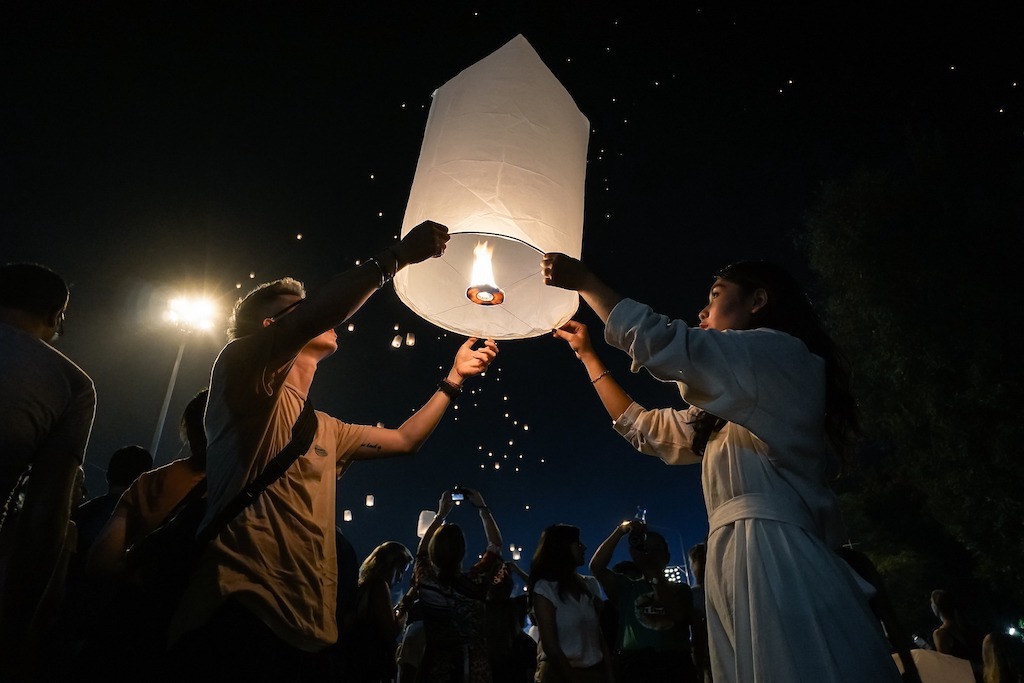
Loy Krathong
November 19th. An event that celebrates the Water God, this is a collection of floating decorations released into the water with burning incense, candles, and flowers. This happens across Thailand and the items are released into the nearest body of water.
Monkey Banquet Festival
November 28th. In Lopburi, monkeys are fed as they heavily occupy the city and are thanked for their presence. An official ceremony precedes the banquets held on the hour every two hours from 10 am to 4 pm.
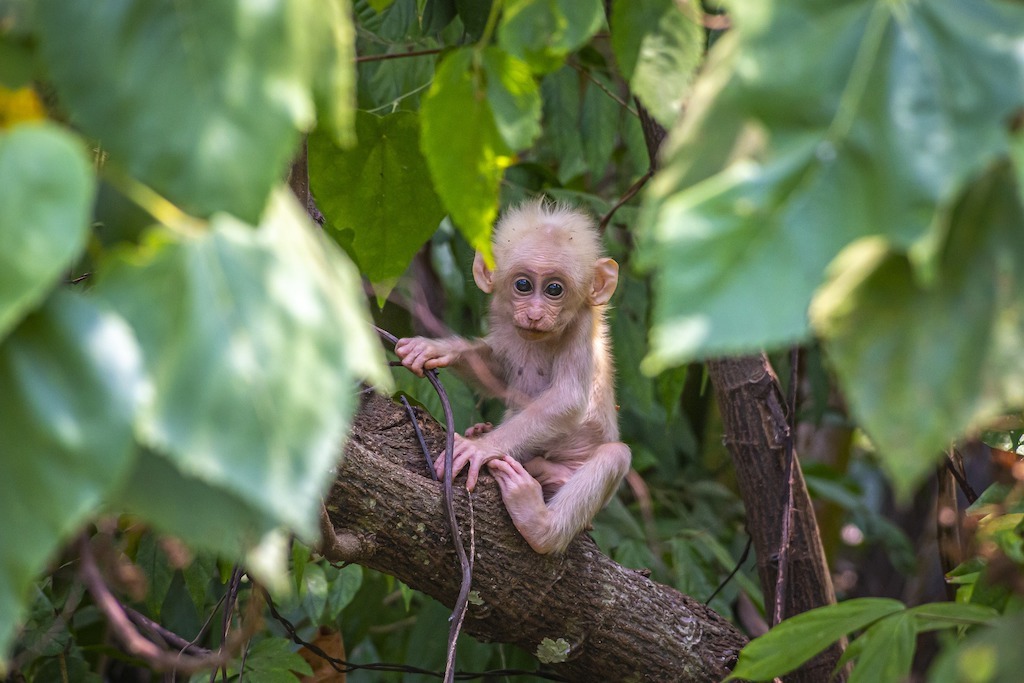
December
King Bhumibol Birthday Commemoration Day
December 5th. This public holiday marks the birthday of the late king who ruled the nation for more than 50 years and recently passed.
Constitution Day
December 10th. Marking the day (1932) when the constitution was adopted for the country (now a constitutional monarchy) is also a public holiday.
Concert in the Park
Beginning in mid-December and running through February, this event which was formerly held in Lumphini Park (now Chulalongkorn Centenary Park) features the Bangkok Symphony each Sunday. It’s free for all participants.
Let us know about your favorite Thailand visit and what time of year it was. Do you know of a special time for festivals or the best hotels deals? Share your secrets below!

